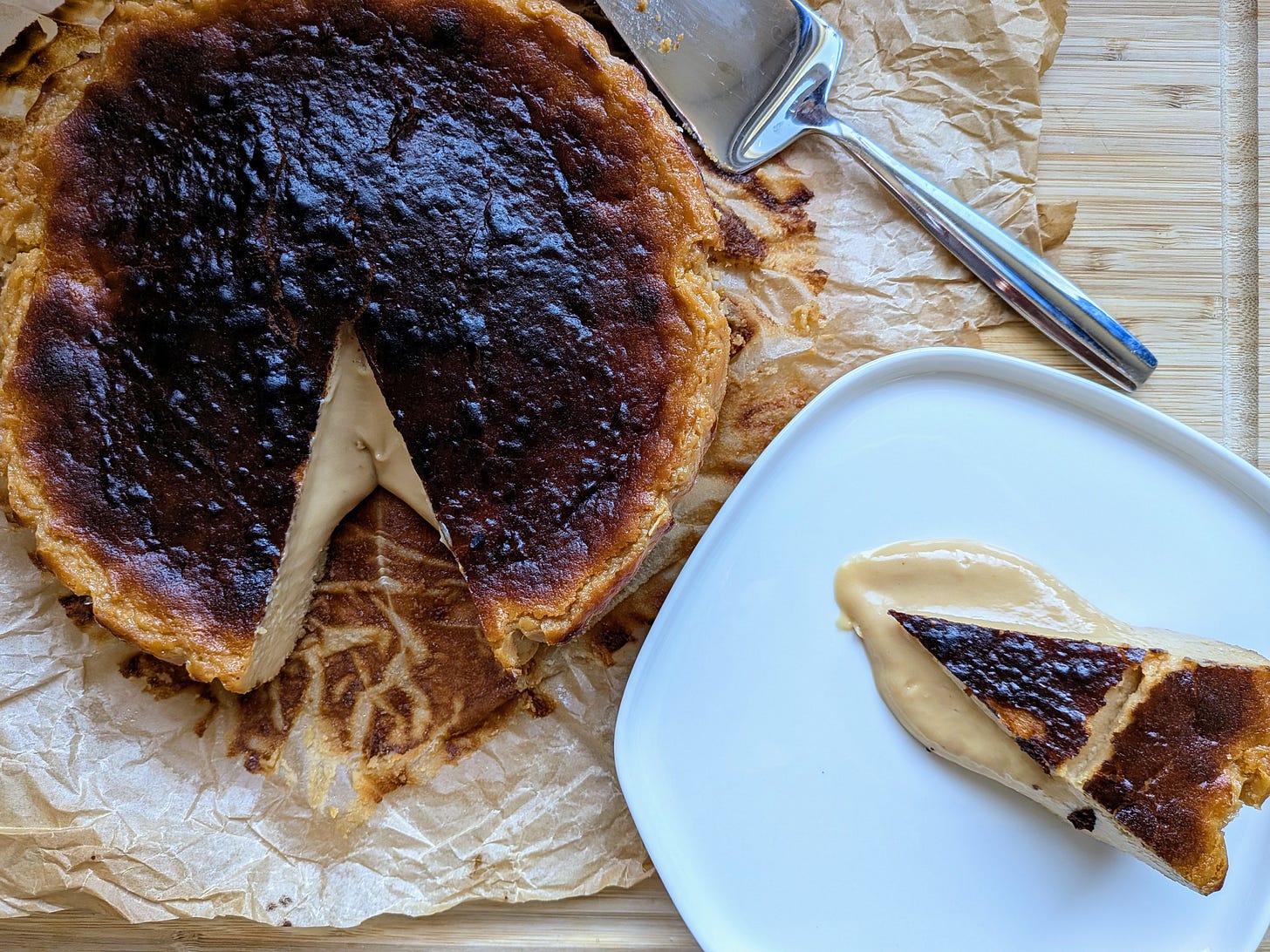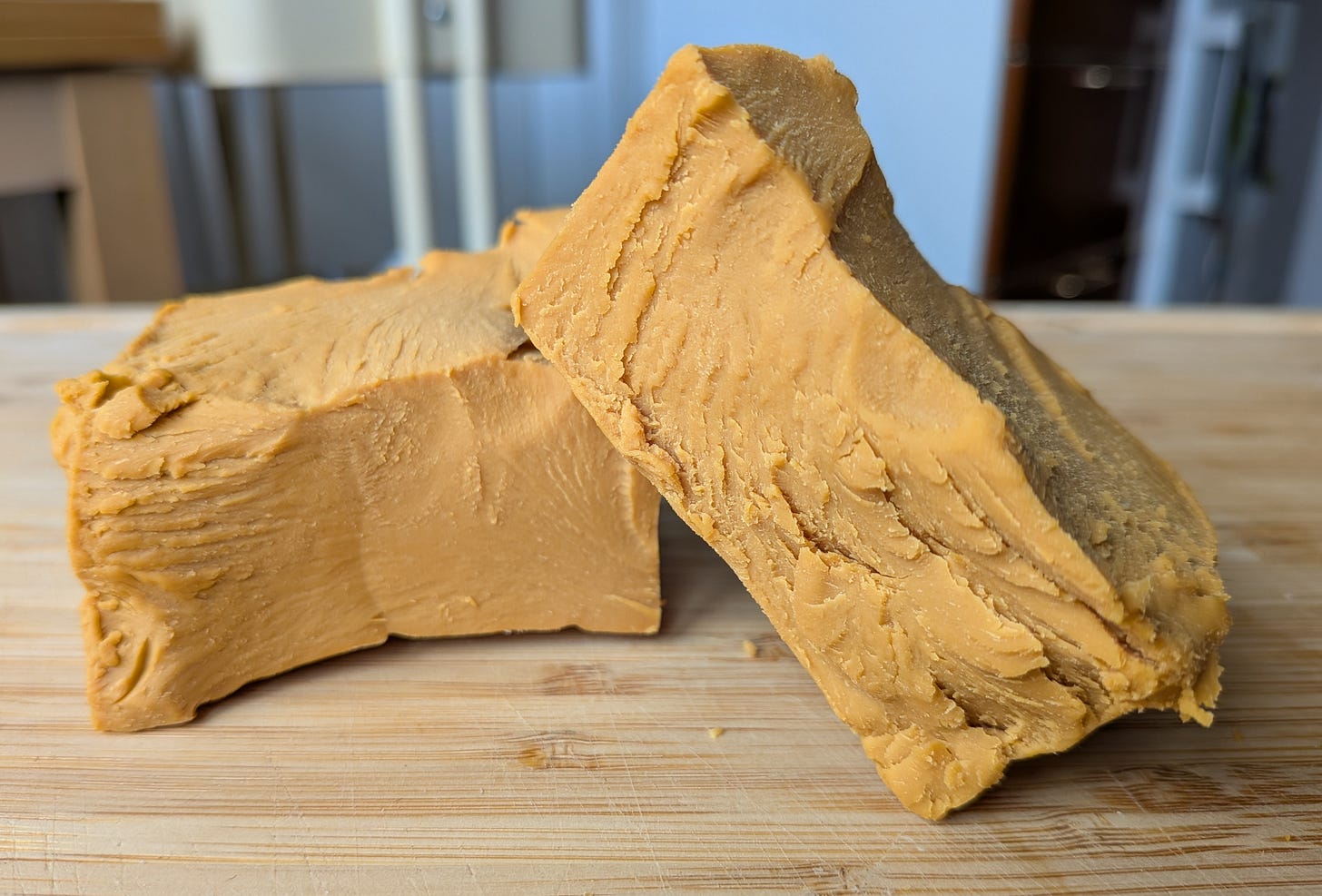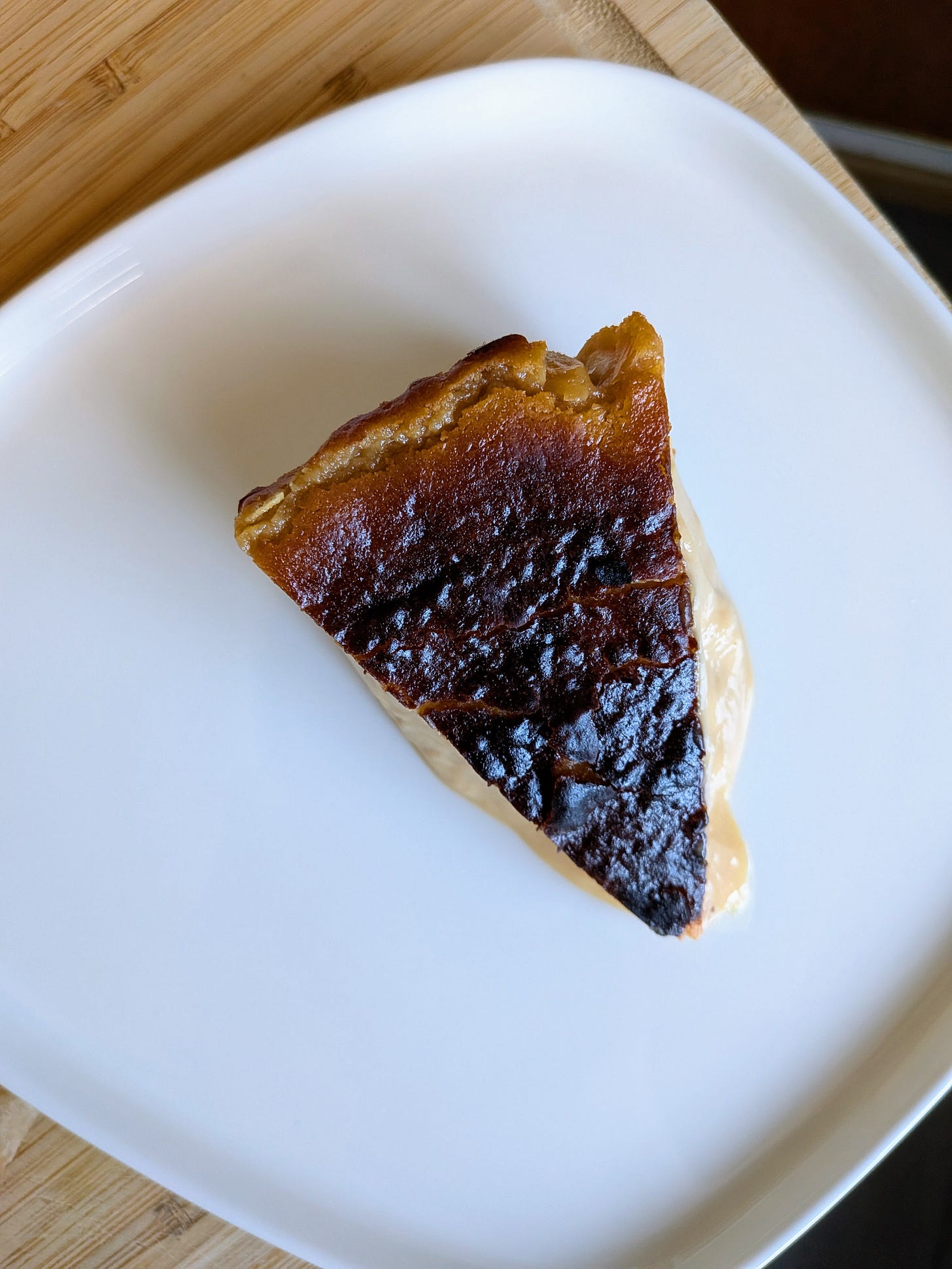Norwegian Brunost Cheesecake
A caramelised whey cheesecake as complex as an Ibsen play, as expressive in colour as a Munch painting.
It burned, the brown cheese, for five full days under the mountain.
Nothing had ever been seen like it, they said.
"I didn't know that brown cheese burns so well," one mumbled in shock.
Another, with professorial detachment, simply remarked that the high concentration of fat and sugar means it burns "almost like petrol if it gets hot enough".
It was early 2013. A truck driver escorting 27 tonnes of that distinctly Norwegian brown cheese called brunost (or gjetost if it is a goat’s milk variety) noticed smoke billowing rudely from his trailer. The Brattli Tunnel he was driving through in northern Norway is over 2 miles long. And, with smoke quickly turning to flame and 300 metres ahead of him until daylight, what more could he do other than stop, jump out the vehicle, and run for his life.
The heat and fumes were so intense in that deep, mountain tunnel that nothing could venture through it again for weeks.
Three years later, in a central Stockholm kitchen run by a man with a Vincent Price moustache (or 21st Century Bob Dylan moustache if you’re so inclined), I, Wil Reidie, was introduced to brunost for the first time.
Though used much like a cheese at many Norwegian breakfast tables, technically it isn’t one at all. To make it, the whey left from genuine cheese-making is blended with milk and cream and reduced down until such little water remains that the sugars caramelise and proteins start to brown (aka the Maillard reaction if you’re into that kinda thing1).
What we end up with is a tender “cheese” with the consistency of a young gouda from the fridge, though rather more like play-doh at room temperature, and a golden brown colour hinting at its rich caramel and lightly roasted flavour.
Despite being up to 30% sugar, it is not, surprisingly, all that sweet. The sugar in the product is lactose, which has a fraction of the sweetness of sugars such as sucrose or fructose. The flavour of brunost is unique because of this. It has a base aroma of caramel and dulce de leche and toffee, though with comparatively little of the sweetness, and a distinct savoury/umami edge that leans so heavily into the buttery that it borders on meaty.
This weird play between the sweet and deeply umami reminds me of miso (the flavour of which also has much to thank browning/Maillard reactions for).
Longtime readers of my little corner of the internet will know I love using miso to add complexity to sweet dishes, and I think this Norwegian brunost does a similar job really well.
Which brings me back to Stockholm…
The dish my moustachioed head chef tasked me with making back in that Stockholm kitchen a decade ago was a simple ice cream of brunost (or mesost as we called it in Sweden, which translates to “whey cheese”) that his grandmother used to make.
I’ve wanted to share a recipe that makes use of brunost in a similar way since I picked up a few packs when I was back in Stockholm earlier this year (it’s so expensive and much harder to find here in Finland). And, much as I love the ice cream flavoured with it, there was really only one thing I wanted to use my limited supply of the stuff on…
… Cheesecake.
And, specifically, a cheesecake cooked in that hard and fast Burnt Basque style2 with a deeply caramelised topping and a centre set as convincingly as a badly told lie.
What we end up with is a cheesecake that gestures to the salted caramel world, but with both a much more integrated and subtle saltiness and a caramel that is far more complex. Because of this, it is lovely eaten leisurely with a cup of strong coffee at the end of a meal so you can really savour the interesting flavours going on.
My journey toward a brunost cheesecake
My jive here at The Recovering Line Cook is to share recipes I’ve been making for years, be it from my restaurant life or those I’ve long cooked in my little Finnish kitchen. The benefit of this is I don’t tend to need to do much in the way of testing, I just share what I know and love.
This time it wasn’t so straightforward.
For as long as I’ve been making Basque cheesecake, I’ve done so according to the entirely reliable recipe shared by Nigella Lawson. So I started by simply swapping out a portion of the cream cheese for brunost.
Though the flavour was great doing this, it was clear that brunost behaves differently to regular cream cheese, and testing was required.
Following a few versions (my freezer is now half full of cheesecake), what I have today for you is a recipe quite diverged from where I started, but one I’m delighted with. I’ve also been sure to list fat contents of all relevant dairy. I often find this missing in recipes but I think it important as the balance of fat and protein and water impacts how sensitive the cake is to overcooking.3




